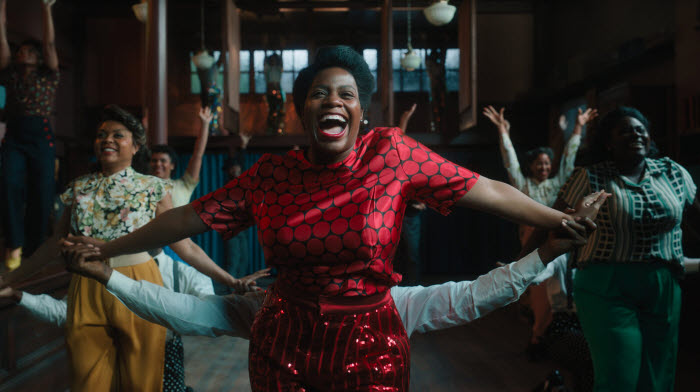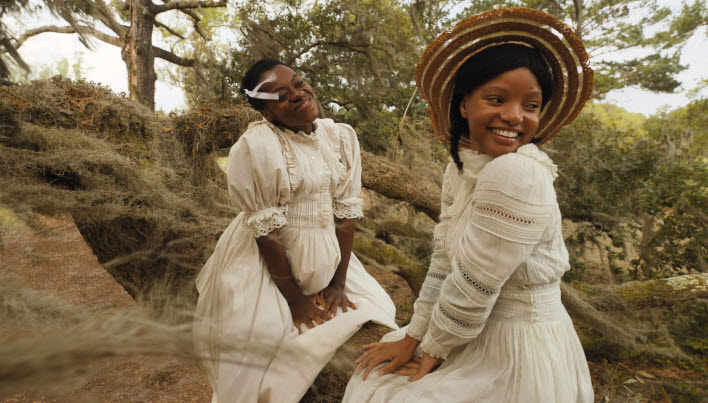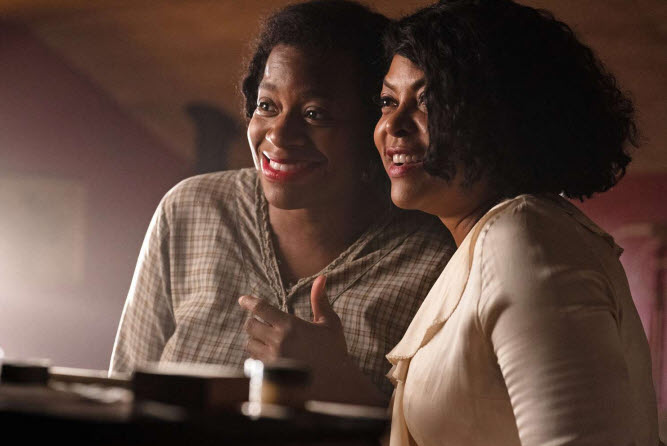
“The Color Purple”, based on an acclaimed Broadway musical which was developed from Alice Walker’s Pulitzer-winning novel of the same name, cannot help but get itself compared with its predecessor. Although it is not totally without flaws, Steve Spielberg’s “The Color Purple” (1985), which was directly adapted from Walker’s novel, is still a powerful drama film to remember, and I must confess that my mind often went to Spielberg’s film while watching its musical junior.
This is probably because 1) I happened to revisit Spielberg’s film a few weeks ago and 2) the adapted screenplay by Marcus Gardley is frequently not so far from Spielberg’s film on the whole, though the dark and unpleasant aspects of Walker’s novel are toned down more in comparison. After all, all those lively musical numbers in the movie could feel quite jarring to us if the movie presented more graphic depictions of the frequent moments of domestic violence and abuse in Walker’s novel and Spielberg’s film.
The early part of the film, which often visually evokes Julie Dash’s “Daughters of the Dust” (1992), is mainly driven by the sisterhood between Celie (Phylicia Pearl Mpasi) and Nettie (Halle Bailey), two young black girls living in a little town of Georgia, 1909. Although Celie is going through another physical plight due to their monstrous father, she and Nettie support each other as usual, and things looks fine and hopeful at least when they are together.
However, Celie soon gets separated away from her sister when some black dude, whom Celie comes to call “Mister” (Colman Domingo, who surely looks less nice compared to his recent Oscar-nominated performance in “Rustin” (2023)), initially comes for marrying her sister but then takes away Celie instead because of her father’s insistence. It soon turns out that Mister is no better than her father, and he later does a very cruel thing to his wife not long after Nettie eventually comes to stay along with her.
With no one else to support or comfort her, Celie manages to endure during next several passing years. Now played by Fantasia Barrino from this point, she simply works and works under Mister’s cruelty day by day, and her docile passivity surely makes a big contrast with Sofia (Danielle Brooks), a young feisty woman who confidently comes along with Mister’s soft-hearted son Harpo (Corey Hawkins, who feels less intense compared to his breakout turn in “Straight Outta Compton” (2015)) for living with him and then marrying him. Unlike Celie, she surely shows others including Harpo that she is not someone to be beaten down easily, but then her hot temper causes a very big trouble for her later.
On one day, Celie finally encounters Shug Avery (Taraji P. Henson), a hot and beautiful blue singer who has been the object of affection for Mister for many years. Mister still tries to woo her despite being a married man at present, and she has no problem at all with staying with him for a while, but then, what do you know, she and Celie find themselves forming a relationship which will change their respective lives forever.
As Celie’s life is gradually brightened up by her affectionate relationship with Shug (Just like Spielberg’s film, the movie stays in the area of PG-13 even while a bit more frank about the apparent sexual attraction between them), musical numbers come and go as before, and director Blitz Bazawule, who previously directed “Black Is King” (2020) with Beyoncé, and his crew members including Oscar-nominated cinematographer Dan Laustsen did a splendid job of imbuing these musical scenes with enough spirit and skill. The songs written by Brenda Russell, Allee Willis, and Stephen Bray may not be that memorable, but they effectively serve the story and characters nonetheless, and the mood surely becomes more cheerful as Celie comes to open up herself more than ever along the story.
However, even while enjoying a number of well-made musical moments in the movie, my mind kept going back to comparing the movie to Spielberg’s film. Sure, they are a lot different from each other in terms of many things including mood and style, but as sharing so many story elements between them, the movie sometimes felt to me like what Spielberg’s film would look like if it were sugar-coated with song and dance.
At least, the main cast members of the movie provide considerable gravitas as well as bouncing spirit to the story and characters. While Fantasia Barrino, who incidentally makes a movie debut here, is convincing in her character’s gradual transformation along the story, Taraji P. Henson, Danielle Brooks, Colman Domingo, Corey Hawkins, H.E.R., Phylicia Pearl Mpasi, Halle Bailey, David Alan Grier, Aunjanue Ellis-Taylor, and Louis Gossett Jr. are well-cast in their respective parts, and the special mention goes to Brooks, who often steals the show as balancing her colorful character well between comedy and drama (She deservedly got Oscar-nominated in last month, just like co-producer Oprah Winfrey did for her equally good supporting performance in Spielberg’s film many years ago).
Overall, “The Color Purple” may not reach to the flawed but unforgettable greatness of its predecessor, but it has enough engaging elements to hold our attention during its rather long running time (141 minutes) at least. It does not impress me a lot, but this is a competent musical movie at least, so I will not grumble for now.










Pingback: My Prediction on the 96th Academy Awards | Seongyong's Private Place